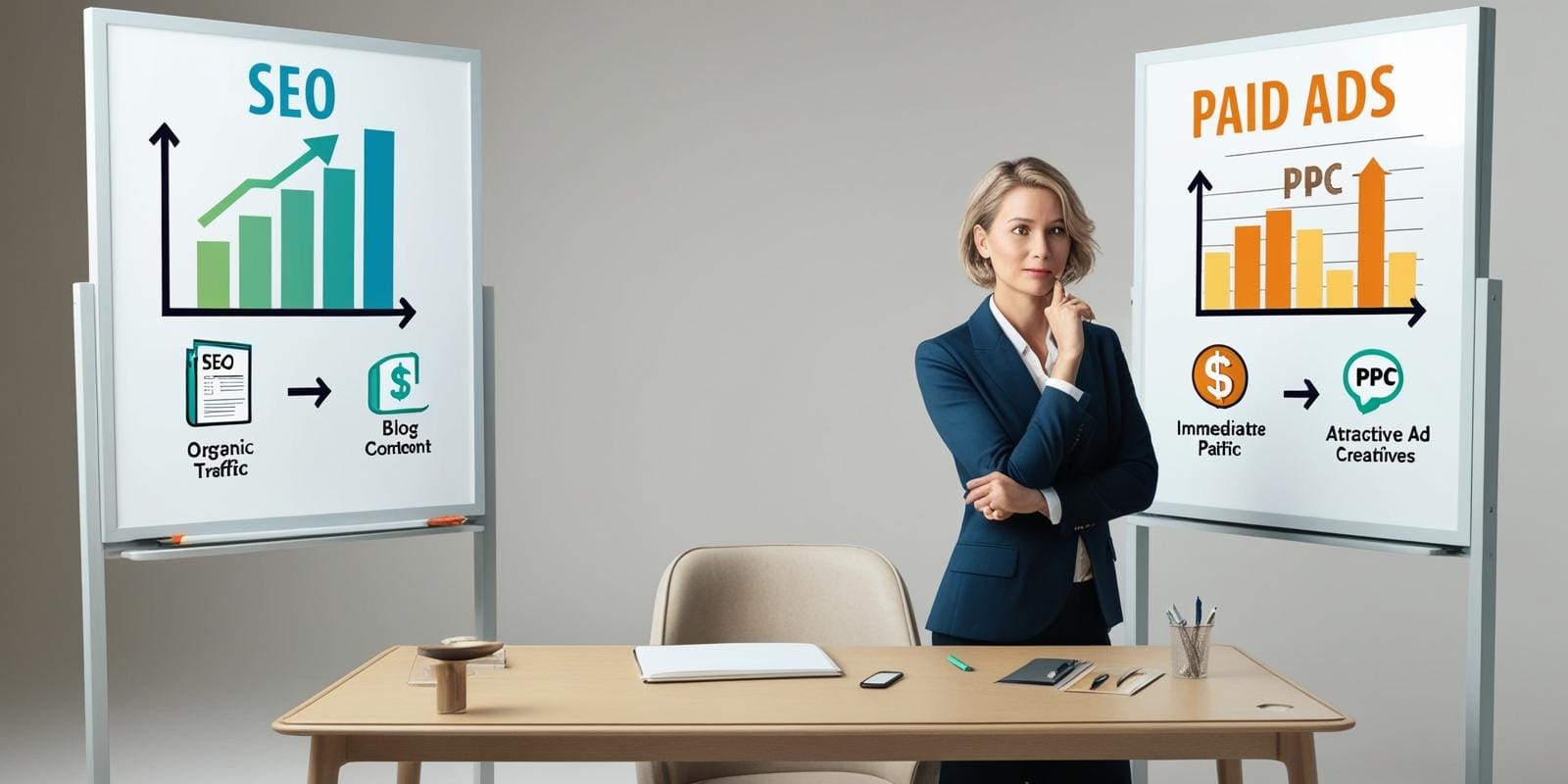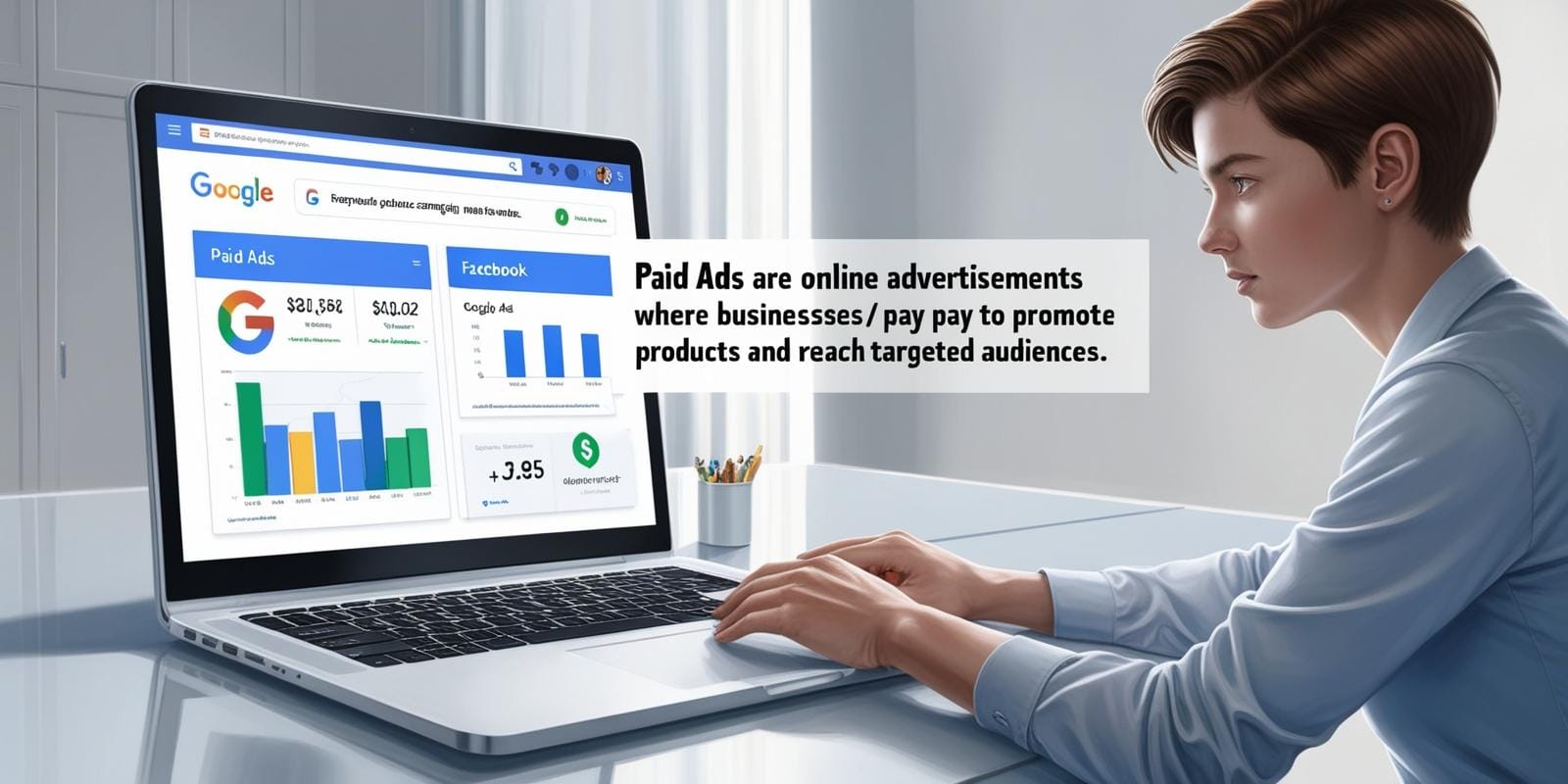
If you’re trying to grow your business online, you’ve probably asked this question:
Should I focus on SEO or run paid ads?
Both can bring traffic, leads, and sales — but they work very differently.
In this blog, we’ll break down what SEO and Paid Ads are, how they compare, and how to decide which strategy works best for your goals and budget.
What Is SEO? (Search Engine Optimization)
SEO is the process of optimizing your website to appear higher in search engine results — like Google or Bing — organically (without paying for ads).
Key Benefits of SEO:
-
Long-term visibility and consistent traffic
-
Builds trust and credibility with users
-
Higher ROI over time
-
Great for content-heavy websites (blogs, service pages)
Common SEO Techniques:
-
Keyword research and content optimization
-
On-page SEO (meta tags, headlines, URLs)
-
Technical SEO (speed, mobile-friendliness)
-
Backlinks from trusted websites
✅ Example:
When someone searches “Best digital marketing agency near me,” SEO helps your site appear at the top — for free.
What Are Paid Ads?
Paid Ads are advertisements you pay for to appear in search engines (Google Ads), social media (Facebook, Instagram, LinkedIn), or other platforms.

Key Benefits of Paid Ads:
-
Instant visibility and fast traffic
-
Highly targeted audience reach
-
Great for promotions, events, product launches
-
Trackable ROI through analytics
Popular Paid Ad Platforms:
-
Google Ads (Search, Display, YouTube)
-
Facebook & Instagram Ads
-
LinkedIn Ads
-
TikTok & Pinterest Ads
✅ Example:
Your ad appears at the top of Google when someone searches “Buy leather shoes online,” even if your SEO is weak.
Popular Paid Ad Platforms:
| Feature | SEO | Paid Ads |
|---|---|---|
| Cost | Free clicks, but long-term effort | Pay-per-click or impression |
| Time to See Results | 3–6 months | Instant |
| Sustainability | Long-term traffic | Short-term burst |
| Control | Less targeting control | Precise audience targeting |
| Trust | High (organic results) | Lower (users know it’s an ad) |
| Best For | Long-term brand building | Fast leads and time-sensitive offers |
Which Strategy Is Right for Your Business?
Here’s how to decide:
🧩 Choose SEO if:
-
You want to build a long-lasting online presence
-
Your budget is limited but you can invest time
-
You’re willing to wait 3–6 months for results
-
You plan to publish blogs or helpful content
🎯 Ideal for: Service-based businesses, educational brands, local businesses
🧩 Choose SEO if:
-
You need quick leads or traffic
-
You’re running a short-term offer, event, or launch
-
You want tight control over targeting and budget
-
You already have a high-converting landing page
🎯 Ideal for: E-commerce stores, event promotions, product launches
💡 Best Strategy? Do Both (Smartly!)
In reality, SEO and Paid Ads work best together.
-
Use paid ads to drive traffic fast while you build your SEO.
-
Use SEO for long-term growth, lower costs, and building authority.
✅ Example Combo Strategy:
Run Google Ads for 3 months while publishing SEO-optimized blogs weekly. As your SEO grows, reduce ad spend.
Final Thoughts
There’s no one-size-fits-all answer — it depends on your goals, industry, timeline, and budget.
But whether you go with SEO, Paid Ads, or both — the key is to stay consistent and track results.
👉 Need help choosing the right digital marketing strategy for your business?
Contact us today and let’s find the perfect growth plan for your brand.
FAQs
For small businesses with limited budget, SEO is often better for long-term growth. But combining SEO with low-cost paid ads can speed up visibility.
It depends on your industry and goals. Most small businesses start with ₹10,000–₹50,000/month. Start small, then scale based on ROI.
SEO typically takes 3–6 months to show results. Competitive industries may take longer. It’s a long-term investment.
Yes. Once your SEO brings consistent traffic, you can reduce or stop paid ads — or keep both running for even better results.
SEO is more cost-effective in the long run, but paid ads offer faster ROI. The most effective strategy often combines both.

